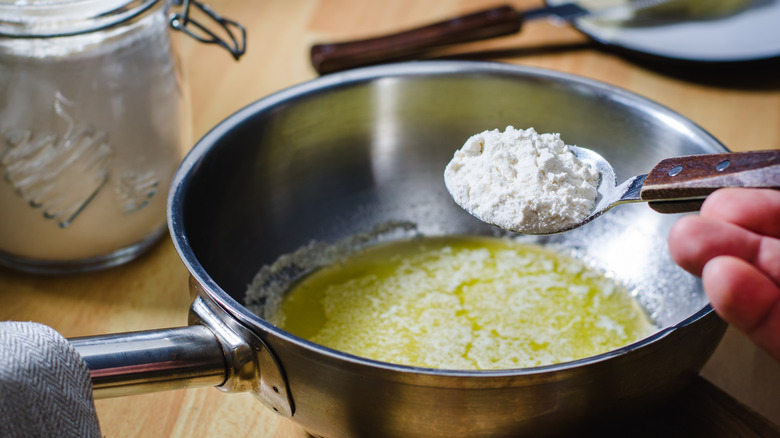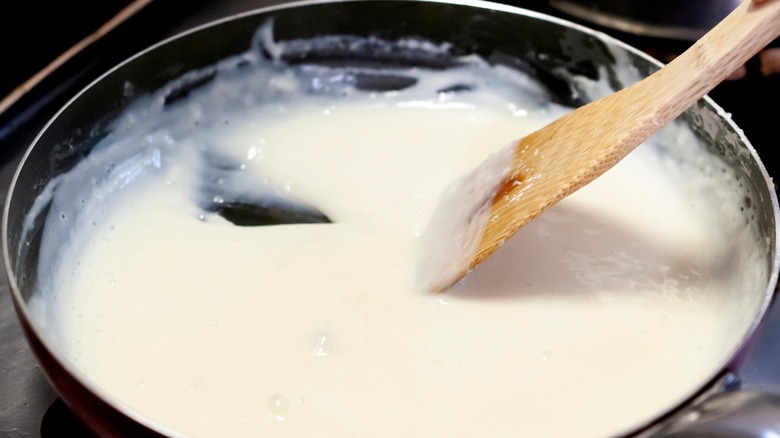Why It's Best To Keep The Roux Light When Making A Mornay Sauce
Mornay sauce, a béchamel-based sauce enriched with cheese, is a fundamental element in various dishes, from macaroni and cheese to classic French croque monsieur or croque madame. It's essential to pay close attention to the roux when preparing a mornay sauce, as it significantly impacts the final flavor and consistency. One might think that a darker roux, which offers a deeper flavor, is preferable. However, keeping the roux light is arguably the best approach when making a mornay sauce, and there are a few compelling reasons why.
The primary function of roux in a mornay sauce is to act as a thickening agent. A light roux, cooked just long enough to eliminate the raw flavor of the flour, provides optimal thickening power. A darker roux, on the other hand, has diminished thickening capabilities, which could result in a sauce that's too thin. A light roux also allows the subtle flavors of the cheese to shine. When making a mornay sauce, the type of cheese you use is crucial, as it imparts a unique taste. A light roux has a delicate, almost neutral flavor, which doesn't overpower the cheese's nuanced characteristics. In contrast, a darker roux introduces stronger, toasty flavors that can easily overshadow the cheese, making it less prominent in the overall taste profile of the sauce. In addition, a light roux contributes to a lighter-colored mornay sauce, which is visually attractive for the culinary applications of this sauce.
Making the perfect mornay sauce
Preparing a mornay sauce begins with creating the roux. Start by melting butter over a gentle heat, then incorporate the flour, stirring continuously to create a smooth mixture. The goal is to ensure the raw taste of the flour has been cooked out without allowing it to take on a dark color. Once the roux is ready, gradually add warm milk, stirring continuously to prevent lumps from forming. This gradual addition and continuous stirring are vital in achieving a smooth béchamel base. Allow this mixture to cook, stirring until it thickens and becomes smooth.
The next step is adding the cheese. Choose a melting cheese that melds well with your dish — Gruyère and Parmesan are excellent choices for a classic mornay sauce. Turn off the stove and gently whisk in the cheese, ensuring it melts smoothly and incorporates well into the sauce. It's essential to avoid overheating at this stage, as excessive heat can cause the cheese to become grainy and adversely affect the sauce's overall texture and consistency. Once well incorporated, forming a rich, creamy texture, your mornay sauce is ready to serve.

